Day 3 of a four day Autumn Tour in Norfolk. It was meant to be dry this morning, at least at first, but it had already started raining by the time we met up. It remained very grey with drizzle on and off for most of the morning, but brightened up a bit more in the afternoon, with the showers becoming more intermittent and even some sunny intervals.
The forecast for a dry and bright start to the morning had evaporated overnight, but as there seemed to be a window of drier weather coming, we headed straight down to Wells first to try for the Red-backed Shrike again.
The Little Grebes were present as ever, but there was no sign of the Tufted Ducks as we walked in past the boating lake this morning. We made our way quickly along the main track and as we got round and out of the shelter of the trees, we were caught by the wind and realised it was rather breezy already.
It was a bit better along the track down beside the caravan park, with the shelter from the reeds. We had a quick look at the marshes and scanned the fences as we passed. There were several Curlews, Lapwings and Pied Wagtails on the first field again. A Kestrel flew over and was chased away by one of the Pied Wagtails.
There were lots of ducks on the large flood in the second field, mainly Teal, plus a couple of Mallard and a few Wigeon on the grass nearby. Further over, we could see a small group of Pink-footed Geese with a pair of Egyptian Geese.
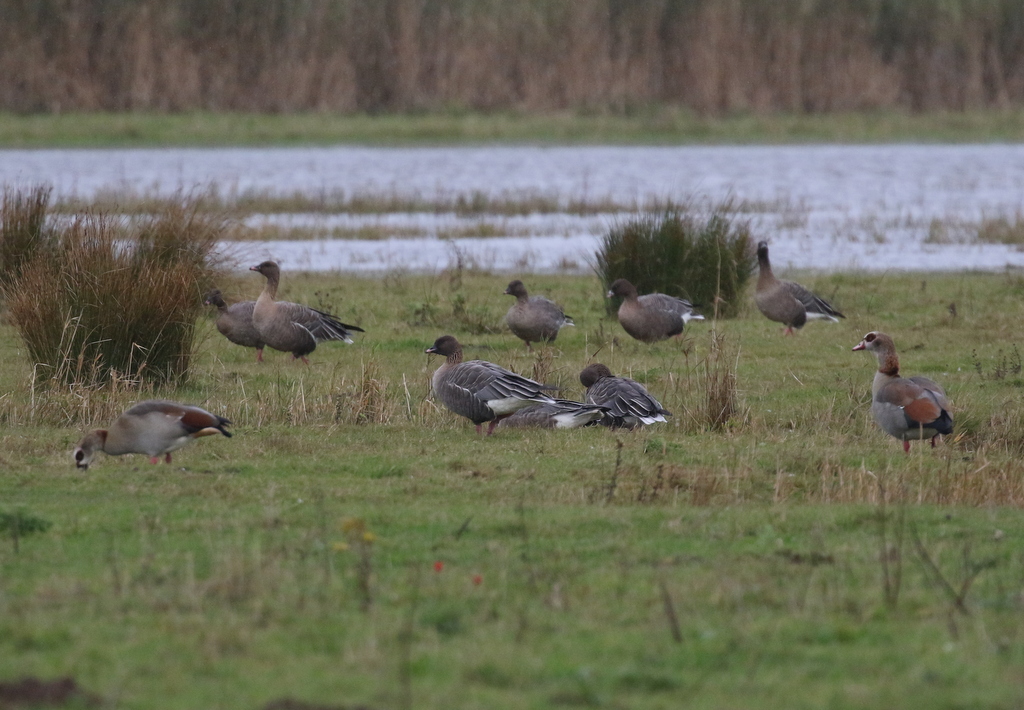
It was very windy again as we got out into the open past the caravan site, and already starting to spit with rain. We stopped to scan and found a couple of Stonechats working their way along the fence line where the shrike had often been recently. We walked down the track opposite again, but it was starting to rain properly now, and there was still no sign of the shrike. We figured it would be unlikely to come out in this weather, so we turned back. We could always try again later, but as it turned out it was not seen again.
It was raining more heavily when we got back on the main track, but we cut in round on the east side of the Dell. A Redwing was sheltering from the rain deep in a hawthorn. We did find a tit flock in the birches, but it was hard to see much with the rain dripping from the leaves and we couldn’t see anything obviously different with it.
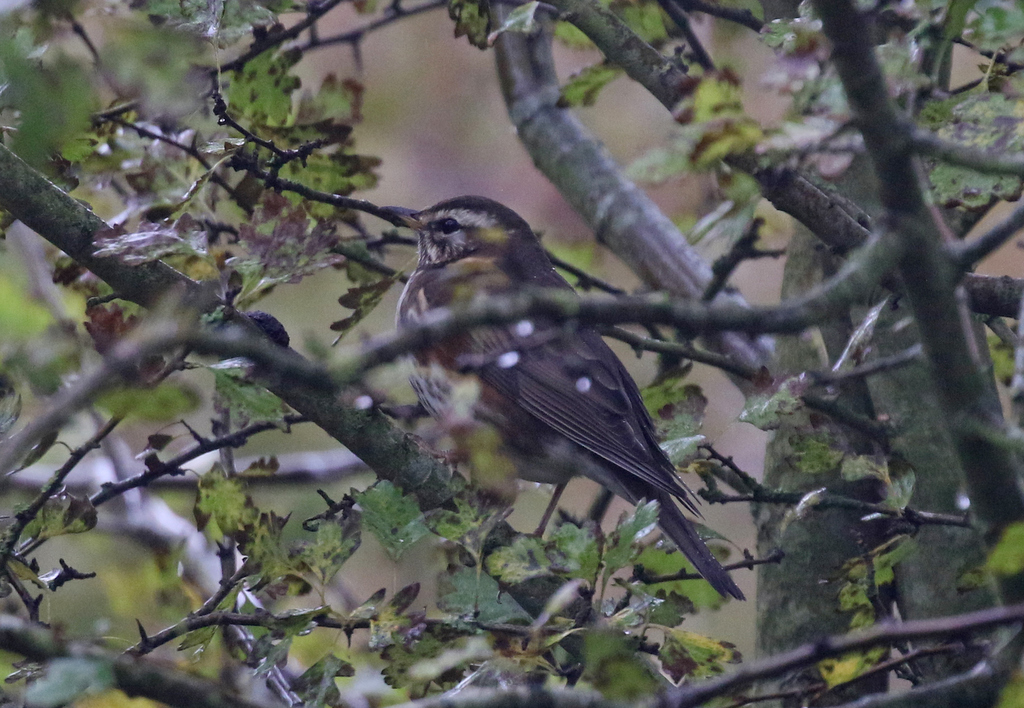
Back in the car park, we checked the weather forecast and the rainfall radar. It looked like there was likely to be rain on and off all morning here, so we decided to drive over to the Broads in the hope that it would be starting to ease off by the time we arrived.
It was already late morning by the time we got to Martham Ferry, but it had indeed thankfully stopped raining. We walked down to the riverside path and when we found a place where we could see over the reeds, stopped to scan the grazing marshes over the other side of the river. Almost immediately we spotted two large grey birds walking around near the cows, a pair of Common Cranes. They were rather distant but we managed to get them in the scope – a good start.
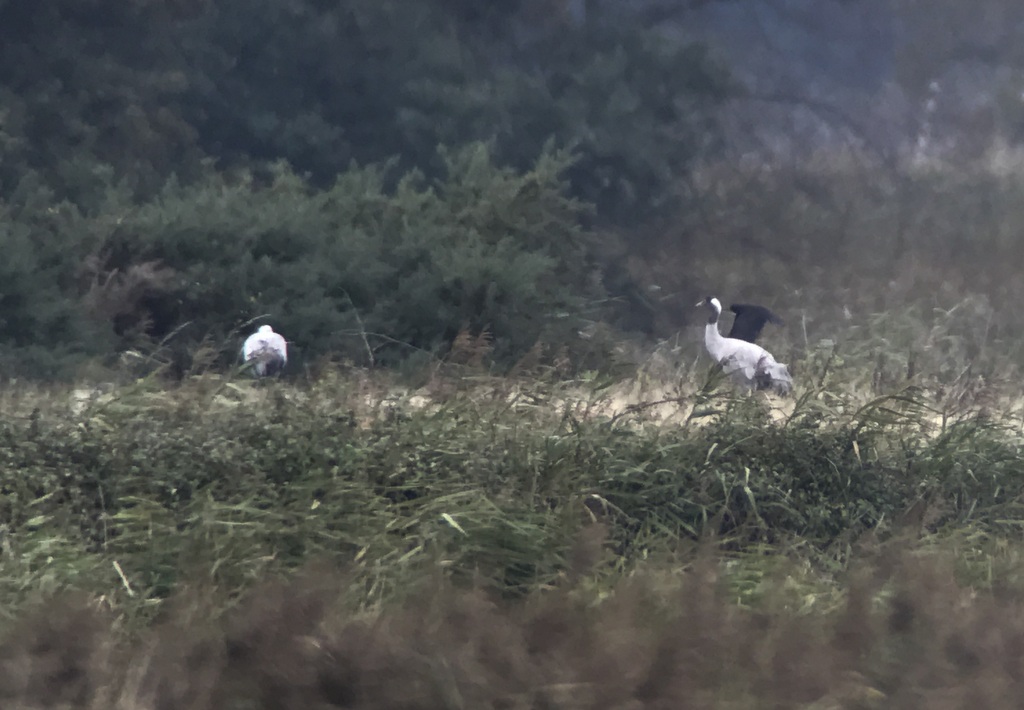
Continuing on down the path, a Cetti’s Warbler called from the brambles in the reeds on the edge of the fishing lakes. A dark shape in the first field was just a Carrion Crow, but in the second field we found our main target here, the Glossy Ibis.
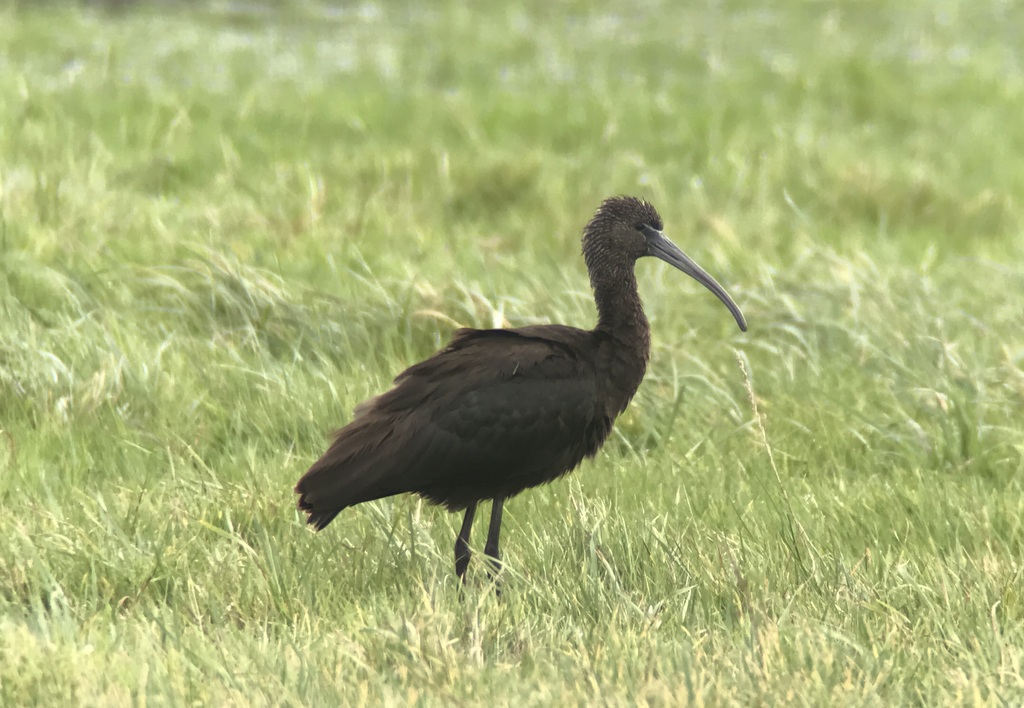
It was quite close, and we had a great view of the Glossy Ibis through the scope. It was feeding busily, walking and probing in the wet grass, then it stopped to preen. Glossy Ibis mostly breeds around the Mediterranean, heading to Africa for the winter.
The breeding population has increased dramatically in Iberia since the 1990s and the number reaching the UK has similarly grown, with influxes typically occurring after drought in Spain has caused more birds to disperse. Glossy Ibis is now a regular visitor to the UK, but still a great bird to see – even if it does look slightly out of place here on a grey and drizzly October morning!
There was a single Black-tailed Godwit in the field too, which came over to feed alongside the Glossy Ibis at one point. A Common Snipe flew over calling. A small gaggle of Greylags and Canada Geese was in the wet grass further back and two Grey Herons flew in. A rather dark looking Common Buzzard was perched in a bare tree at the back and a male Marsh Harrier flew over.
A large flock of Redwings came up from behind the trees at the back and flew across, disappeared round the back of the fishing pits, followed quickly by a second smaller group. There were well over 100 Redwing in total, presumably freshly arrived from Scandinavia here for the winter and now dispersing inland.
There were rather grey clouds approaching from the west now, so we decided to head back to the minibus. A lone Pink-footed Goose flew over calling.
It was good to get the two distant ones earlier, but we decided to have a quick drive round next to see if we could find some closer Cranes. There were none at the first site we tried. On our way back, we turned down a side road and stopped to scan the fields. It was rather misty, but we could see a large group of tall grey birds in the distance, Cranes.
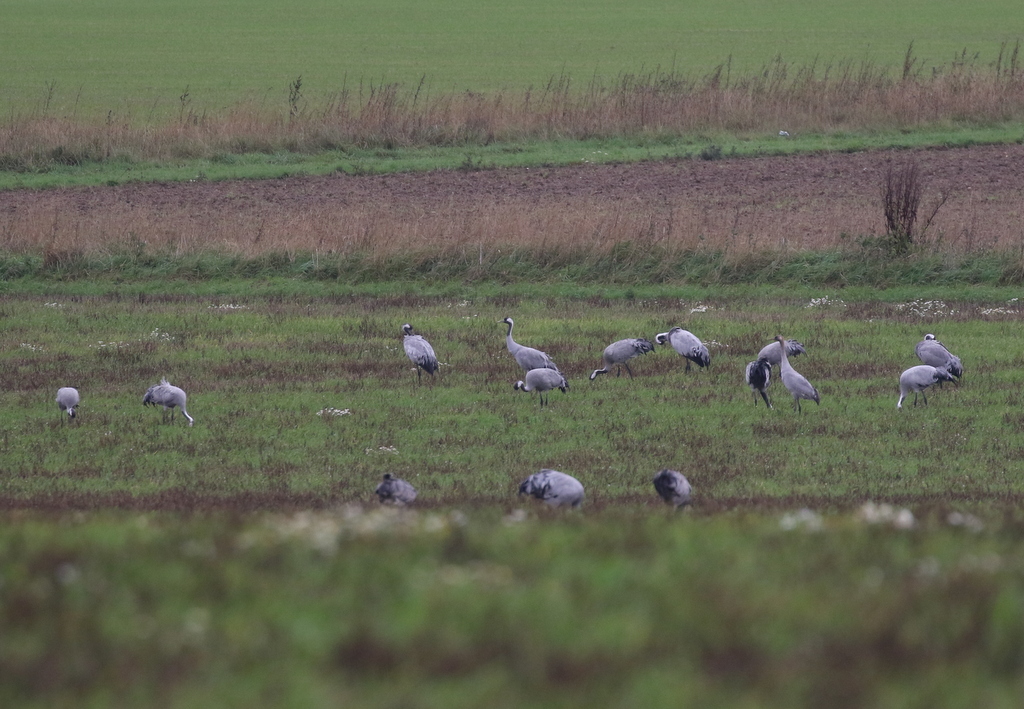
We realised we could see the Cranes better from a high point on the main road, so we drove back round. We were worried they might be too close to the path, but they were settled in the back of the field and allowed us to view them from the verge at a discrete distance. It was a great view of them here, feeding in a weedy field with a small flock of Greylags. We counted 21 in total, including three families, each pair of adults with a single browner juvenile, raised this summer.
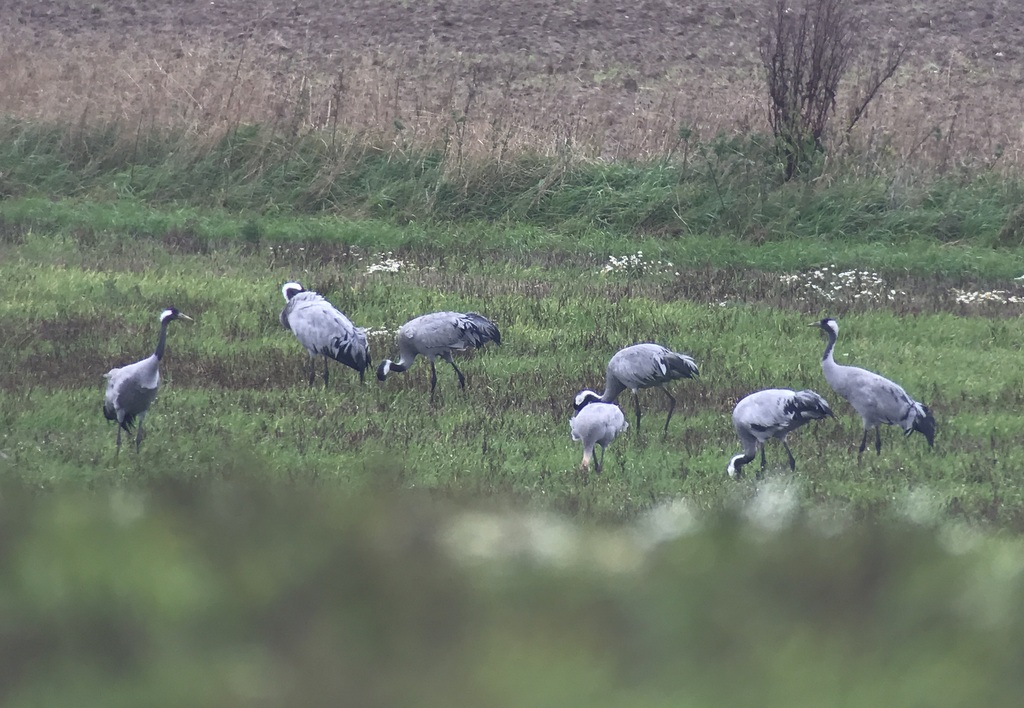
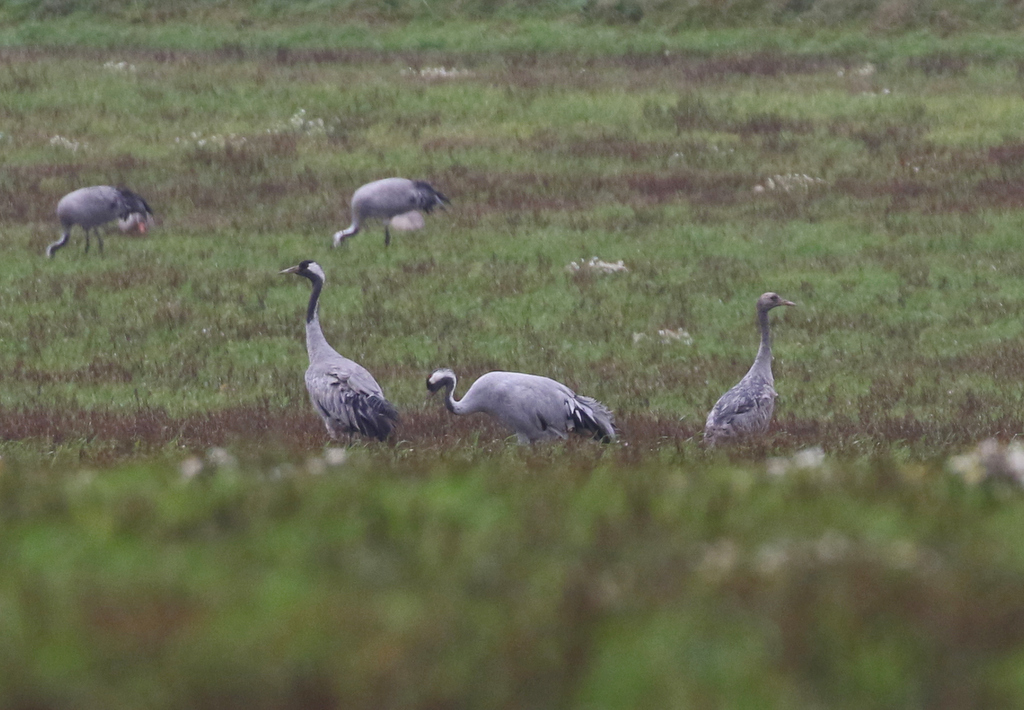
Having enjoyed great views of the Cranes, we set off to find somewhere for lunch, and a hot drink. The weather was much improved now, brighter, and even with some patches of blue sky, so we sat outside on a convenient picnic table.
After lunch, we headed round on the coast road to Waxham. On the way, we stopped to look through a mass of gulls feeding in a field that was just being cultivated. Amongst the mostly Black-headed Gulls we found a couple of Mediterranean Gulls, and got everyone onto a nice winter adult with pure white wing tips and black bandit mask.
We had been told about a Black Redstart at Waxham earlier, on the scaffolding on the house on the corner, but there was no sign of it now. There were people in the house and lots of people coming and going from the beach, lots of cars on the narrow road. We walked up to the churchyard to see if it might be there, but drew a blank there too.
We decided to have a look at the beach. As we got up to the dunes, a Grey Seal was just offshore and a juvenile Red-throated Diver was diving nearby, very close in. We walked down to the shore and had great views of it as it resurfaced repeatedly in the breakers just in front of us.
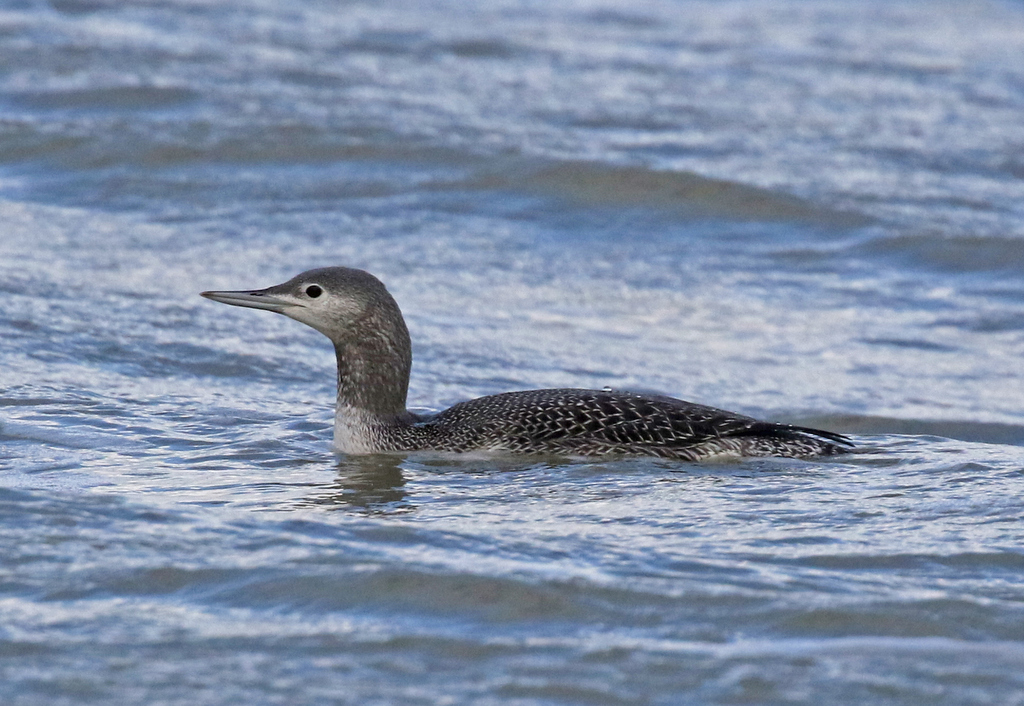
There was a steady stream of Gannets flying past further out over the sea. An Oystercatcher landed briefly on the rocks. As another shower blew in over the beach, we sought shelter in the gap in the seawall. Another adult Mediterranean Gull flew past just offshore.
There was still no sign of the Black Redstart around the house on the corner. With a long drive back, we decided to set off back to North Norfolk now. The journey was better than expected today, and the weather had now improved, bright and sunny by the time we got back to the north coast. We decided to stop off at Stiffkey for a quick scan out over the saltmarsh.
There a a liberal scattering of Curlew, Redshank and Little Egrets over the saltmarsh. A couple of Marsh Harriers were hunting out at the far edge, towards the beach. We managed to find a small group of Brent Geese feeding in the vegetation out towards Blakeney Pit. A Greenshank flew across calling and dropped down again into a large creek out of view.
A Spoonbill appeared out on the saltmarsh away to the west, presumably coming up out of one of the small pools where it had been feeding. It was joined by a Little Egret, noticeably smaller and slimmer. While we were watching it, a second Spoonbill appeared nearby. Most of the Spoonbills which spent the summer here have gone south already – many normally spend the winter in Poole Harbour – but there are still a small number clinging on here, for now at least.
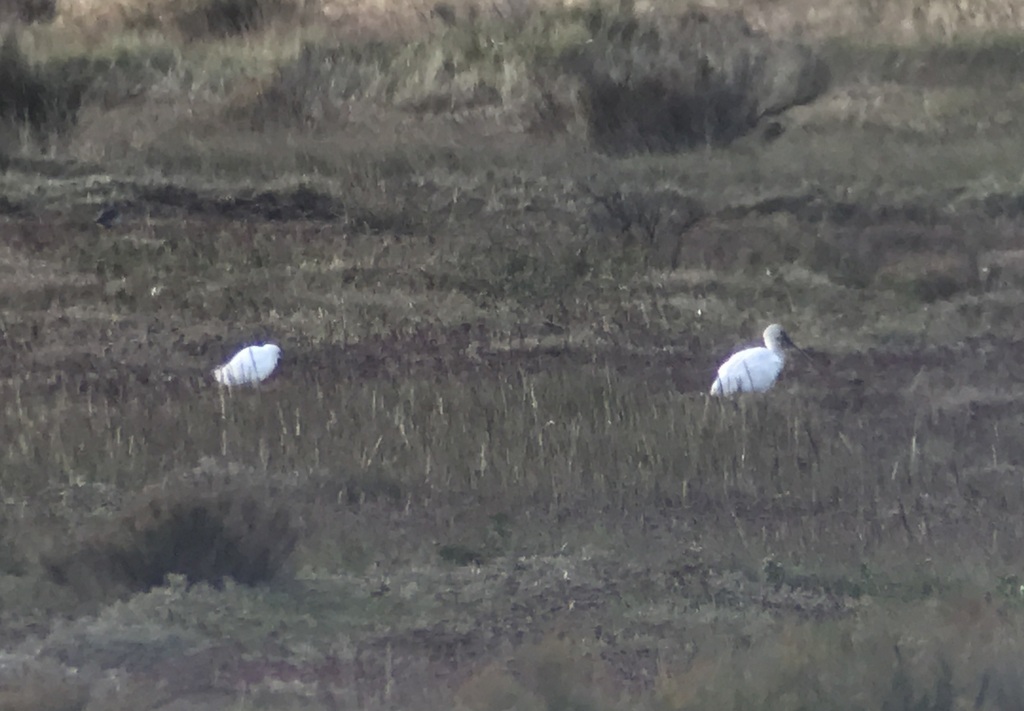
It was a productive quick stop for half an hour, but it was now time to head back. We had managed to see a lot today, despite the weather.
















